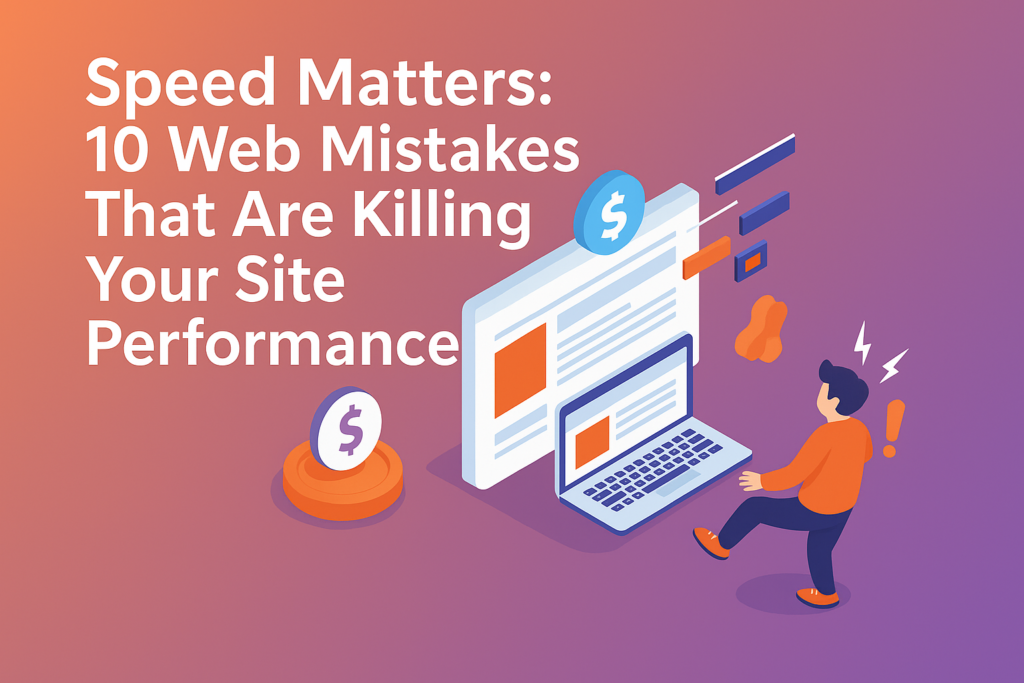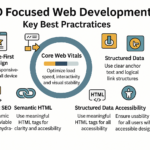Agile methodology is no longer just a buzzword—it has become a key approach in modern software development. In a world where technology evolves rapidly, businesses need to adapt quickly, collaborate efficiently, and deliver high-quality software faster. Agile helps teams stay flexible by breaking projects into smaller sprints, allowing continuous improvements and faster feedback.
Yet, many still don’t fully understand why Agile is essential. Without it, projects can suffer from delays, miscommunication, and rigid structures that make adapting to change difficult. Ignoring Agile means missing out on better efficiency, teamwork, and customer satisfaction.
To truly appreciate Agile, we need to explore its principles and benefits: How does Agile work, and why is it the key to software development success?
What is Agile?
Agile is a software development method that helps you create high-quality software quickly. Instead of working on everything at once, you break the project into smaller parts called sprints. Each sprint focuses on specific tasks, making it easier to track progress and improve along the way. Agile is all about flexibility. You don’t follow a strict plan—you adapt as needed based on customer feedback. This way, you ensure the final product meets user expectations.
How Agile Methodology Works
Agile methodology works by breaking a project into smaller, manageable tasks called sprints that typically last 2-4 weeks. Each sprint focuses on developing and delivering a functional part of the software. Here’s how it works step by step:
-
- 1. Project Planning: You start by defining the project’s goals and breaking them into smaller, manageable tasks called user stories. These tasks describe specific features or requirements that need to be developed. All user stories are added to the product backlog, which is a prioritized list of features and tasks that guide the development process in Agile methodology.
-
- 2. Sprint Planning: Before starting a sprint, you and your team choose high-priority tasks from the product backlog to work on. The team sets clear sprint goals and estimates the effort required to complete these tasks. This process ensures that everyone is aligned, and the work is manageable, allowing the team to focus on delivering valuable features efficiently.
-
- 3. Daily Stand-up Meetings: Every day, the team holds short stand-up meetings to discuss progress, identify any obstacles, and plan the next steps. These quick meetings keep everyone informed, aligned, and focused on sprint goals. They help address issues early and ensure that the project stays on track, promoting better collaboration and efficient problem-solving.
-
- 4. Development and Testing: During the sprint, the team develops and tests selected features to ensure they meet quality standards. Continuous testing helps identify and fix bugs early, preventing major issues later. This process ensures that the software is functional and ready for feedback at the end of each sprint, maintaining high-quality outcomes.
-
- 5. Sprint Review and Feedback: At the end of each sprint, you and your team present the completed work to stakeholders for review. Their feedback helps identify improvements and refine the product. This process ensures that future sprints focus on high-priority tasks, keeping the project aligned with customer needs and business goals.
- 5. Sprint Review and Feedback: At the end of each sprint, you and your team present the completed work to stakeholders for review. Their feedback helps identify improvements and refine the product. This process ensures that future sprints focus on high-priority tasks, keeping the project aligned with customer needs and business goals.
-
- 6. Retrospective and Improvement: After each sprint, you and your team review what went well and identify areas for improvement in a retrospective meeting. This reflection helps refine processes and enhances team efficiency. By applying these lessons in future sprints, you ensure continuous improvement and better project outcomes over time.
Some Key Features of Agile Methodology:
-
Customer Satisfaction through Continuous Delivery
Agile keeps customers happy by delivering working software frequently, allowing them to test and provide feedback. This continuous involvement ensures the final product meets their needs. Frequent updates also help catch and fix issues early, preventing major problems later. By improving the product step by step, Agile saves time and ensures higher-quality software.
-
Welcome Changing Requirements
Agile embraces change in software development, allowing flexibility even late in the process. Instead of sticking to a rigid plan, you adapt to evolving customer needs and new ideas. By making small, frequent updates, Agile ensures continuous improvement. This approach helps create software that remains relevant and useful, delivering what users truly need without delays.
-
Frequent Delivery of Working Software
Agile delivers working software frequently, avoiding long waits for results. You work in short cycles (2 to 4 weeks) called sprints, each focusing on a feature or improvement. By the end of each sprint, you have a working version ready to test. This ensures steady progress and faster feedback, allowing quick fixes and efficiently shaping the final product.
-
Close Collaboration
Agile thrives on teamwork, ensuring close collaboration between developers and business stakeholders. Stakeholders understand customer needs, while developers bring ideas to life. Regular meetings help track progress, solve issues, and adjust plans. This constant feedback leads to better decisions and fewer misunderstandings. By staying connected, you ensure the software meets real user expectations and improves continuously.
-
Motivated Teams
A strong, motivated team drives Agile success. Empowering your team gives them the freedom to make decisions, solve problems, and take ownership, boosting confidence and results. Open communication and trust enhance collaboration. Daily stand-ups keep everyone aligned and ready to tackle challenges. When team members feel valued and heard, they stay motivated, take initiative, and deliver creative solutions.
-
Face-to-face communication
It boosts teamwork in Agile by ensuring faster, clearer discussions. Instead of relying on long emails, you talk directly to your team, allowing quick problem-solving and idea-sharing. Daily meetings keep conversations short yet meaningful, maintaining progress. In-person interaction builds trust, helps team members collaborate better and work more efficiently, reduces misunderstandings, and keeps everyone aligned.
-
Working Software as a Measure of Progress
In Agile, working software is the best measure of progress. Instead of focusing on lengthy documents, you prioritize building functional software that users can test. Documentation is helpful but shouldn’t slow you down. Each sprint delivers a working version, allowing quick feedback and faster improvements. This approach keeps the project moving and ensures customers receive real value.
-
Sustainable Development Pace
Agile focuses on sustainability, not just speed. Maintaining a steady, manageable pace prevents burnout and ensures high-quality results. Rushing leads to mistakes and stress, but Agile promotes a realistic pace that keeps the project moving smoothly. Consistent development cycles keep the team focused, motivated, and creative. Sustainable progress leads to better software and a happier, more productive team.
Continuous Attention to Quality
Agile prioritizes quality from the start. It’s not just about speed—technical excellence and good design ensure reliability. Clean, efficient code prevents bugs and simplifies future updates. Testing, code reviews, and regular improvements maintain high standards. A well-structured, user-friendly design enhances user experience. Combining strong code with smart design creates software that’s valuable, effective, and built to last.
-
Regular Reflection and Improvement
Agile promotes continuous reflection and improvement. You don’t just finish tasks—you analyze what worked and what didn’t during retrospectives. This process helps celebrate successes, fix issues, and prevent mistakes. Improvement means enhancing strengths, not just solving problems. By refining workflows regularly, you boost efficiency, teamwork, and software quality. Reflect, adapt, and improve to build stronger teams and better products.
Why Agile Methodology is Needed and How Popular Tools Help
1. Lack of Flexibility to Changing Requirements
Problem: In the Waterfall model, you define all requirements at the start, and they rarely change. Once development begins, making changes is difficult and expensive. Customer feedback comes too late, so the final product may not meet user needs. This rigid process makes it hard to adapt, leading to delays and wasted effort.
Solution With JIRA: An agile tool solves this problem by allowing continuous feedback and flexibility. Instead of setting all requirements at the start, you adapt as the project evolves.
JIRA helps you manage this by:
-
- 1. Creating User Stories – You break tasks into small, clear user stories, making updates easier.
-
- 2. Using Sprints – Short development cycles let you adjust based on feedback.
-
- 3. Tracking Progress – JIRA’s Kanban and Scrum boards help you monitor changes.
-
- 4. Getting Instant Feedback – Customers review each sprint, ensuring the product meets their needs.
With JIRA, you stay flexible, avoid costly changes, and deliver better software!
2. Delayed Delivery and Time-to-Market
Problem: In traditional development, you follow a long, linear process with no room for early versions. It takes months or even years to release a working product. This delay makes it hard to enter the market on time, reducing competitiveness. Without early feedback, you risk building something that doesn’t fully meet user needs.
Solution Using Azure DevOps: An agile tool helps you deliver software faster by breaking development into short, manageable cycles. Instead of waiting months, you release updates frequently.
Azure DevOps makes this easier by:
-
- 1. Managing Sprints – You work in short cycles, delivering a working product every few weeks.
-
- 2. Continuous Integration & Deployment (CI/CD) – Automates testing and deployment, reducing delays.
-
- 3. Real-Time Tracking – Boards and dashboards help you monitor progress and make quick adjustments.
-
- 4. Early Customer Feedback – You release small features for users to test, ensuring the product meets their needs.
With Azure DevOps, you speed up releases, stay competitive, and improve your software continuously!
3. Limited Customer Involvement
Problem: In traditional development, you involve customers only at the beginning and the end. They share requirements early, but they don’t see the product again until it’s finished. This often leads to misalignment between what they expect and what you build. Without regular feedback, you risk delivering a product that doesn’t fully meet their needs.
Solution Using Trello: It keeps customers involved throughout development, ensuring the final product meets their needs.
Trello helps by:
-
- 1. Organizing Feedback – You create boards for customer suggestions and track changes easily.
-
- 2. Sharing Progress – Customers can see updates in real time and provide input early.
-
- 3. Prioritizing Needs – You arrange tasks in lists, making sure important features come first.
-
- 4. Improving Collaboration – Customers, developers, and stakeholders work together, reducing misalignment.
With Trello, you keep customers engaged, adapt quickly, and build a product that truly meets their expectations!
4. Poor Collaboration Between Teams
Problem: In traditional development, teams work separately without enough communication. Developers, testers, and business teams stay in their own silos, leading to misunderstandings. Without clear collaboration, important details get lost, causing delays, errors, and missed deadlines. When teams don’t work together, it becomes harder to deliver a high-quality product on time.
Solution Using Slack: This agile tool encourages team collaboration to avoid miscommunication and delays. Instead of working in silos, you connect teams in real time.
Slack helps by:
1. Creating Team Channels – Developers, testers, and business teams communicate instantly in shared spaces.
2. Sharing Updates Quickly – You send messages, files, and feedback instantly, reducing misunderstandings.
3. Integrating with Agile Tools – Slack connects with JIRA, Trello, and other tools, keeping all teams informed.
4. Daily Stand-ups – Quick check-ins help you track progress and solve issues faster.
With Slack, you improve teamwork, reduce errors, and keep your project on track!
5. High Risk of Project Failure
Problem: In traditional development, testing happens only after coding is finished. This means you find defects too late, making them harder and more expensive to fix. When major issues appear at the end, you struggle to meet deadlines, and costs increase. Late testing leads to delays, stress, and a lower-quality product.
Solution Using Selenium: An agile tool solves this problem by allowing continuous testing throughout development, not just at the end.
Selenium helps by:
-
- 1. Automating Testing – You run tests automatically to find defects early.
-
- 2. Testing During Development – Instead of waiting until the end, you test each sprint to catch bugs sooner.
-
- 3. Saving Time – Automated tests run faster than manual ones, helping you fix issues quickly.
-
- 4. Ensuring Quality – Regular testing keeps your software reliable and bug-free.
With Selenium, you detect issues early, reduce costs, and deliver high-quality software on time!
6. Difficulty in Identifying and Addressing Risks Early
Problem: In traditional project management, stakeholders can’t always see progress in real time. Without clear updates, you struggle to identify bottlenecks and assess if the project is on track. Delays and issues go unnoticed until it’s too late, making it harder to fix problems quickly and ensure smooth project completion.
Solution Using ClickUp: An Agile ensures real-time project visibility so you can track progress and fix issues early.
ClickUp makes this easier by:
-
- 1. Dashboards & Reports – You create live dashboards to monitor project health and spot bottlenecks.
-
- 2. Task Status Updates – Team members update task progress, keeping everyone informed.
-
- 3. Workload View – You check team capacity and prevent overloads.
-
- 4. Automating Alerts – Get notifications for delays, blockers, or changes in project status.
With ClickUp, you give stakeholders real-time insights, identify risks early, and keep your project running smoothly!
7. Lack of Transparency and Accountability
Problem: You struggle to keep stakeholders updated because project progress isn’t always visible. Without real-time tracking, it’s hard to spot bottlenecks or know if the project is on schedule. Delays and issues go unnoticed until they become serious problems, making it difficult to assess project health and take action in time.
Solution Using Asana: It helps you keep stakeholders informed in real-time, making it easier to track progress and fix issues early.
Asana helps by:
-
- 1. Project Timelines – You create visual timelines to show progress and upcoming tasks.
-
- 2. Task Status Updates – Every task has a clear status, so stakeholders always know what’s happening.
-
- 3. Workload Management – You track team workload to prevent delays and ensure tasks are completed on time.
-
- 4. Automated Reports – Asana generates progress reports, helping you quickly identify bottlenecks.
With Asana, you track project health, improve visibility, and avoid last-minute surprises!
Future of the Agile Methodology
Agile methodology will become even more important for you in the future as businesses demand faster delivery, adaptability, and continuous innovation. With AI-driven automation, DevOps integration, and advanced collaboration tools, Agile will help you streamline workflows and improve efficiency.
As industries shift towards hyper-agility, you will rely on real-time data, predictive analytics, and automation to make smarter decisions. Agile won’t just be a project management approach—it will be the foundation of digital transformation, shaping how you design, build, and scale software.
In the coming years, Agile will be at the core of modern IT strategies, helping you stay competitive, customer-focused, and ready for the future.








